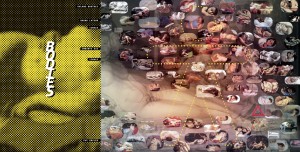Roland Barthes : I encounter millions of bodies in my life; of these millions, I may desire some hundreds; but of these hundreds, I love only one.
Bruno Latour : My kingdom for a more embodied body!
SIMAGE : The polarity of our body and our mind is what makes us who we are. We could think of bodies as images and minds as meanings. If image is never more itself than when the meaning can be ignored, then our body is never so much itself as when we are asleep.
Umberto Eco : A dream is a scripture, and many scriptures are nothing but dreams.
SIMAGE : When asleep, the body seems to be petrified, not unlike a statue, and yet it is run by autonomic nervous system activity; blood pressure, heart rate, breathing, digestion, and arousals.
The brain also falls asleep, but ironically in dreaming, we awake in a new sense of self, with sometimes deeper meaning of who we are. We do so in images played out in the narratives of our subconscious.
In art the images of sleep are elongated passive forms that can be seen as landscape iconographies.
Regardless of subject, one could argue that unlike cinema or live TV, images are always asleep, and like dreams where vivid and even physical sensations will leave no physical trace, images exist more in what they mean than in their physicality. It is in this state that we find “dream bodies” not made of biology, but of emotive matter. They become ideal surfaces of ourselves, bodies so vast that they can be conceived as our first landscape—the skin of our dreams, as the earth and all other things are surfaced by “skin.”
Eve Ensler : My dream is that people will find a way back home, into their bodies.
